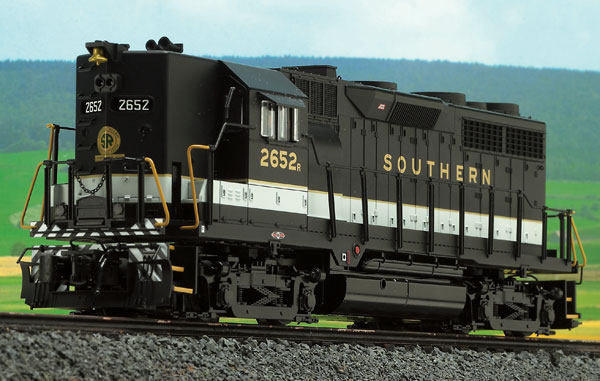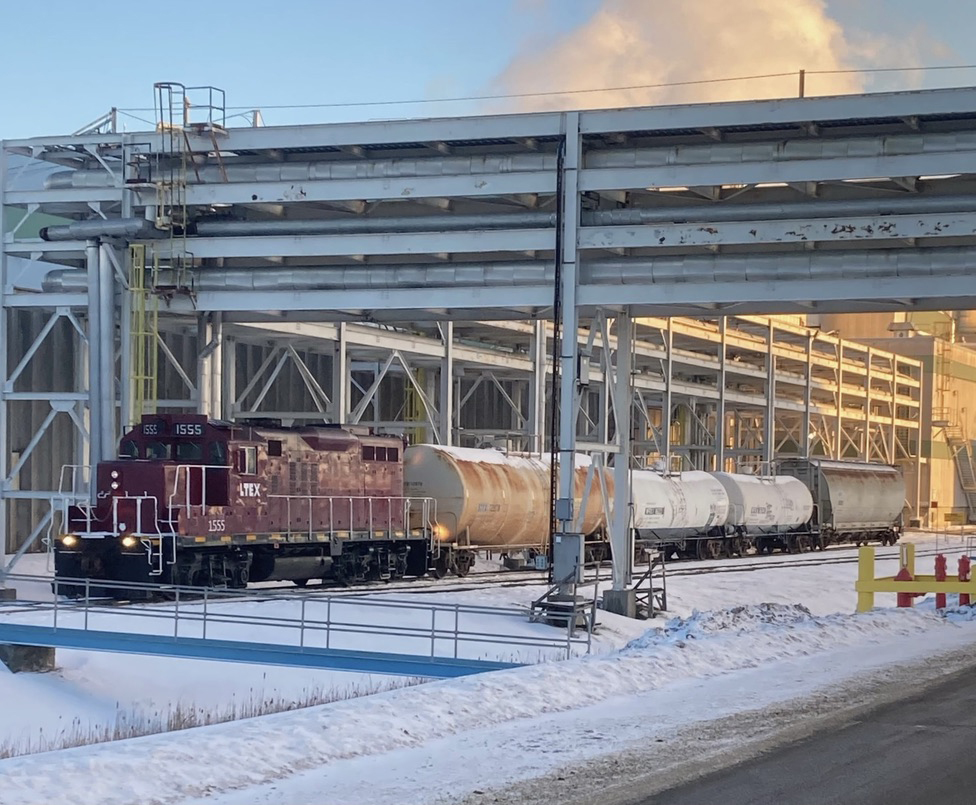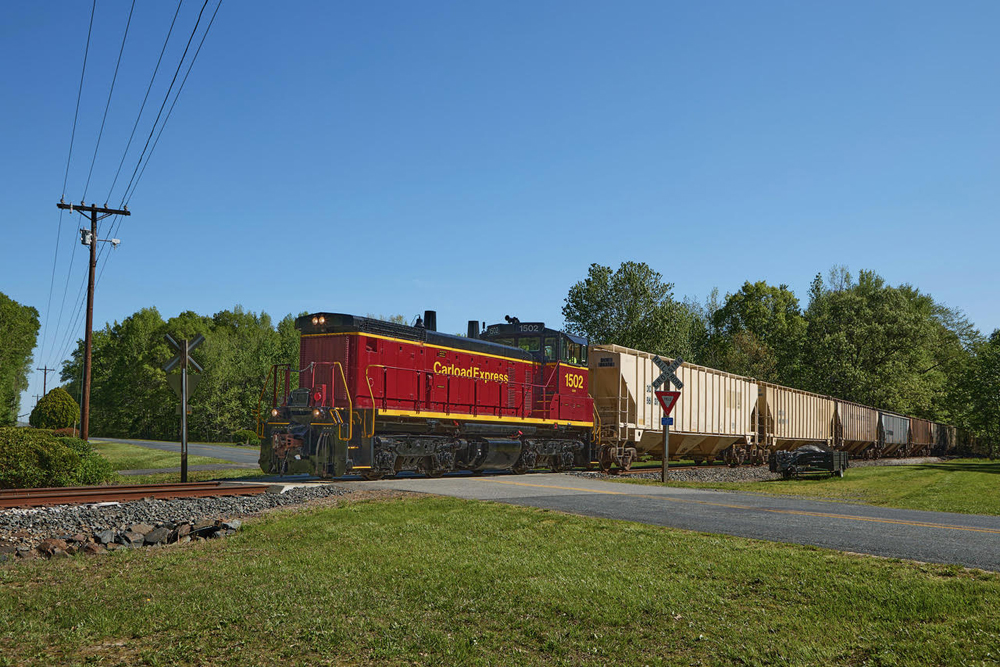The 2,500-horsepower, four-axle locomotives were built from October 1963 through January 1966. EMD sold more than 1,300 to North American railroads.
Atlas O’s model is available in high- and low-nose versions. Our test sample sports the high-nose option ordered by the Norfolk & Western and Southern (and Southern subsidiaries Central of Georgia and Savannah & Atlanta). Our sample is numbered 2653, one of 62 ordered for the Southern Railway.
The model
The proportions and squared-off ends of the high-nose GP35 make the model look like a brick. Pick it up, and it feels like a brick – very, very rock solid!
The GP35’s level of detail is up to Atlas O’s high standards. Hinges, doors, latches, and other body-shell features are all well executed. I had to look twice at the air filters behind the cab before I realized that they weren’t see-through but cast-in.
Ditto for the filter array on the long end of the locomotive – it is comprised of a complex assortment of cast-in screens and supports.
There are add-on grab irons on both ends of the locomotive. The top of the plastic shell has cast-in rivets, some terrific see-through fan housings (three 36-inch fans and one 24-inch fan), and clearly defined blades beneath the screens. There are a dozen of the now-standard lift rings, all separately applied to the roof. Be careful, however, when you lift the locomotive out of its foam package since the lift rings are fragile.
The Southern ran its locomotives both long- and short-hood forward, and this model has the engineer facing the short hood. A bell is located on the short hood.
Worth noting are the Alco trucks beneath this EMD diesel. When railroads traded in first-generation diesels in the 1960s, it was reasonably common for a manufacturer to reuse the old trucks beneath new locomotives, regardless of brand mixing. The casting of the trucks on the Atlas O model is superb, with clean, crisp parts. The truck steps are excellent, and the brakeman’s steps next to the rear coupler have drain holes.
Decoration of the Southern model is excellent. Details like the black-and-white safety stripes on the pilot and the yellow handrails and steps stand out. The gold numbering on the cab sides of our Southern Geep and the gold and green logos on either end never looked better.
Worth noting are the sleeves holding the coil couplers. Right next to them you’ll find simulated air hoses with MU control leads. Simulated uncoupler arms are positioned above. The pilot on the short end of the locomotive has a snowplow installed.
The RailSounds speaker is housed in the stout, die-cast metal fuel tank. The sound on/off and TrainMaster Command Control run/program switches are on the underside of the frame. The volume control is hidden at the base of the coupler on the short-hood end.
The frame of the Atlas O model measures 52 feet long in O scale (13 inches), which matches the prototype’s length. The coupler-to-coupler length is 61 feet in O scale (151/4 inches).
On the test track
In conventional-control mode, the low-end speed average for this diesel was outstanding: 8.4 scale mph. The high-end average came in at 98.3 scale mph. In command-control mode, the low-end speed average was 6.6 scale mph.
Drawbar pull for the 5-pound locomotive was 2 pounds, 91/2 ounces.
For conventional-mode operation, Atlas O recommends installing a 9-volt battery to keep the RailSounds system from cutting out when sequencing the reverse unit by interrupting track power.
I found the shell exceptionally tough to remove. Although there are only six screws holding the body to the frame, getting the handrails out of the cab was darn near impossible. The handrails on our sample were so snug that even with needlenose pliers I hesitated to apply much force for fear of damaging the shell or breaking the handrails.
The locomotive’s TMCC functions all worked as advertised, and the diesel smoke unit and sound system were terrific. Holding the loco at a stop, revving up, and letting it rip is a hoot!
Atlas O’s GP35 is a real winner. It offers good performance, pleasing sounds, and impressive detailing. If you’re nostalgic for 1960s locomotion, scope out this gem.














